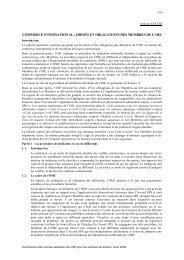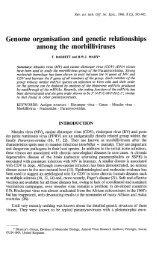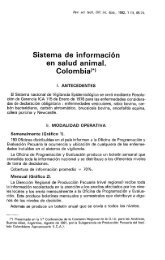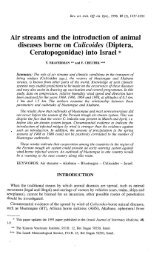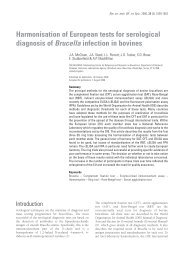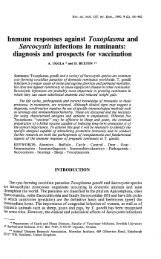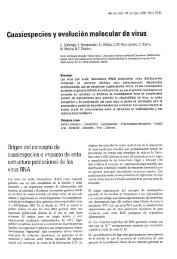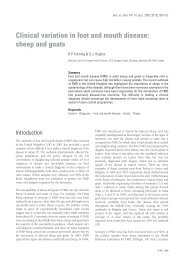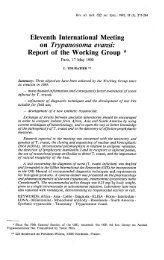26th Conference of the OIE Regional Commission for Asia
26th Conference of the OIE Regional Commission for Asia
26th Conference of the OIE Regional Commission for Asia
Create successful ePaper yourself
Turn your PDF publications into a flip-book with our unique Google optimized e-Paper software.
87. Table 1 gives a quantitative overview <strong>of</strong> livestock populations in <strong>Asia</strong>, <strong>the</strong> Far East and<br />
Oceania. Compared to <strong>the</strong> figures presented at <strong>the</strong> <strong>OIE</strong> <strong>Regional</strong> <strong>Conference</strong> in 2007, <strong>the</strong><br />
overall animal numbers in 2009 show a significant increase. More <strong>OIE</strong> Members provided data<br />
on <strong>the</strong>ir animal population.<br />
Immediate notifications received in 2009<br />
88. Figure 1 gives an overview <strong>of</strong> exceptional disease events notified by Members <strong>of</strong> <strong>the</strong> region<br />
between 1 January and 23 October 2009. Foot and mouth disease (FMD) and highly<br />
pathogenic avian influenza (HPAI) were <strong>the</strong> most frequently notified diseases with a total <strong>of</strong><br />
27 immediate notifications. Pandemic H1N1 2009 and low pathogenic avian influenza (LPAI)<br />
were reported twice each while <strong>the</strong>re was a single immediate notification <strong>for</strong> each <strong>of</strong> <strong>the</strong><br />
following diseases: African swine fever (ASF), bluetongue, classical swine fever (CSF),<br />
myxomatosis, rabies and trichinellosis. Five immediate notifications pertaining to <strong>the</strong><br />
continental part <strong>of</strong> <strong>the</strong> United States <strong>of</strong> America are not included in <strong>the</strong> figure.<br />
Figure 1. Number <strong>of</strong> immediate notifications submitted to <strong>the</strong> <strong>OIE</strong> from <strong>Asia</strong>, <strong>the</strong> Far East and<br />
Oceania<br />
between 1 January and 23 October 2009, by disease<br />
20<br />
18<br />
16<br />
14<br />
12<br />
10<br />
8<br />
6<br />
4<br />
2<br />
0<br />
FMD<br />
HPAI<br />
LPAI<br />
Pand. influenza H1N1<br />
ASF<br />
CSF<br />
Bluetongue<br />
Myxomatosis<br />
Rabies<br />
Trichinellosis<br />
Foot and mouth disease<br />
89. Of <strong>the</strong> seven FMD serotypes, three (A, O and <strong>Asia</strong> 1) have been reported in <strong>Asia</strong>, <strong>the</strong> Far East<br />
and Oceania in 2009. For 2008 alone, 1491 new FMD outbreaks were reported in <strong>the</strong> region.<br />
Serotype O continues to be widespread while serotype A is moving north-eastwards, affecting<br />
China. <strong>Asia</strong> 1 continues to be reported in central <strong>Asia</strong>. Figure 2 shows <strong>the</strong> distribution <strong>of</strong> FMD<br />
in <strong>the</strong> region in 2008 and 2009 and Figure 3 shows <strong>the</strong> vaccination coverage in <strong>the</strong> region <strong>for</strong><br />
cattle, swine, sheep and goats.<br />
11





